For a long time, Tempelhof Airport was one of three Berlin airports. It was finally closed in 2008. The history of the airport is marked by myths and mysteries, some of which remain unexplained to this day.
This is the third time we have taken part in a guided tour of the airport grounds. I am sure it will not be the last time. During the tour, we not only got to know part of the huge site, but also learned a lot about the history of the airport.
Tempelhof Airport – until 1930
Tempelhof Airport was built on the former parade ground, Tempelhofer Feld. The first powered flight took place here as early as 1909, followed by many other demonstration flights.
After the First World War, there was initially strong resistance to the development of the Tempelhofer Feld. In May 1923, the construction of the airport was approved. Two wooden hangars and a station building were built. With the granting of the concession, flight operations began in October 1923 with the first flights to Munich and Gdansk.
The construction of the airport progressed rapidly. More hangars, a searchlight tower, a radio station and a terminal building were built. At that time, the connection of the airport to the underground was unique in the world. The newly opened “airport” station (today Paradestraße) was completed in 1927. Later, an airport restaurant, a visitor terrace and an airport hotel were built.

Tempelhof Airport 1930 – 1945
In 1930, Tempelhof Airport was one of the 4 largest airports in Europe.
In 1935, Ernst Sagebiel was commissioned to construct a new building that corresponded to the ideas of the monumental architecture of the National Socialists. An airport for 6 million passengers a year was planned. It was also to be usable as a military airport. In addition, the site was to be used for events organised by the National Socialists, who wanted to hold the Reichsflugtag here, for example.
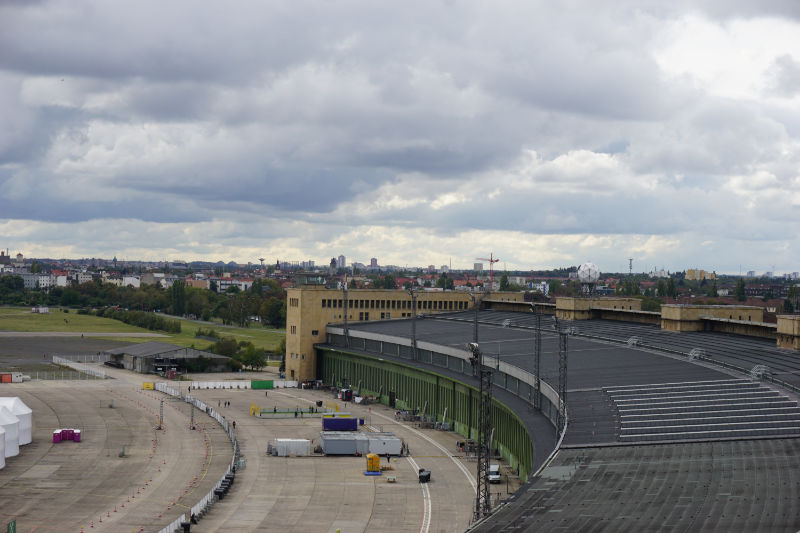
Thus, stands for the spectators were to be erected on the roof of the building and on ramparts at the other end of the airfield. The roof construction along the piers, which was to carry up to 100,000 spectators, is still an amazing static achievement today. The people were to be led up via stair towers. These staircases are for the most part still under construction and have never been used.

In 1941, the building was completed and the airfield enlarged. The building’s new main entrance was now at the Kreuzberg underground station, which was unceremoniously renamed “Airport” (today Platz der Luftbrücke).
During the Second World War, Tempelhof became the largest assembly plant for fighter planes and radar equipment. Many of the workers were forced labourers who lived in barracks on the airfield.
For many Berliners, the airport was an important place of refuge during the air raids. Even today, there are still numerous air raid shelters in the basements that saved the lives of many people, especially children. We were able to see some of the rooms during the tour. Some of the rooms were reserved for children, who were cared for by nurses and hopefully could be picked up by their parents after the bombings.
The individual air raid shelters were tiny and had emergency exits in addition to a sophisticated ventilation system. For “amusement” and as a distraction, the walls of the rooms were painted with pictures and quotes by Wilhelm Busch. Maybe it helped, but to me it seems even more depressing. Also, the idea that, according to contemporary witnesses, up to 90 people sat in such a cramped room makes a picture on the wall seem even more bizarre.
Other air raid shelters below the airport were not so small. Somewhat larger bunkers, up to 3 storeys underground, housed some aircraft manufacturing facilities, film archives and power stations. Later, some of them served as storage rooms for the US Army.

Construction work on the airport continued even after the war began and it was still not completed at the end of the war in 1945.
The airport building was predominantly constructed in reinforced concrete or brick. All visible surfaces were covered with natural stone slabs. Many parts of the building remained undestroyed during the war. One of them was the entrance hall. With a ceiling height of 15 metres and 21 large hall windows, it was truly impressive. Today, if you stand above the false ceiling, you can still get a small impression of the hall.

This picture shows only a small part of the hall. Some of the cladding was removed after the end of the war.
A special feature of the airport is an underground road and railway tunnel built to supply the airport with goods.

This is where the final assembly of aircraft took place at the end of the Second World War.
At the end of the war, the airport commander at the time refused Hitler’s order to blow up the entire facility. Only the concrete floor in the check-in hall was blown up, making the hall unusable for a long time.
What will happen to Tempelhof Airport after the Second World War … the second part of the report will tell you.
Address:
Flughafen Tempelhof,
Ehemaliger Flughafen Tempelhof,
Tempelhofer Damm 7,
12101 Berlin
Webseite









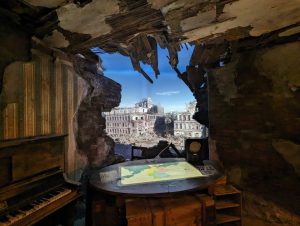






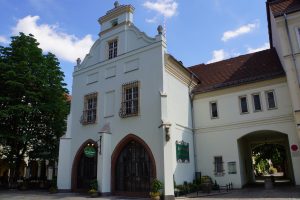

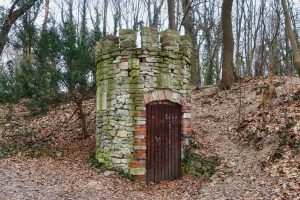












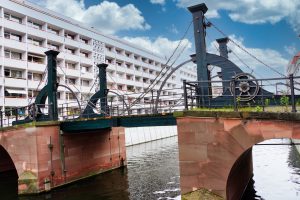
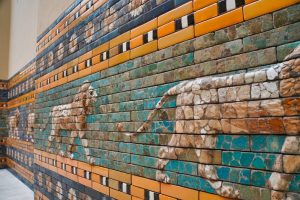



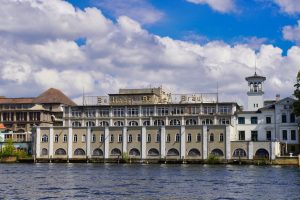









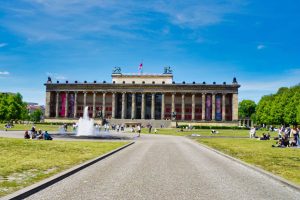





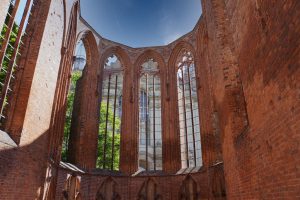












































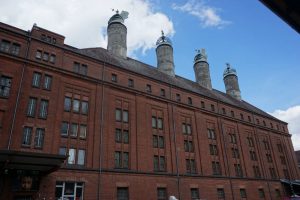





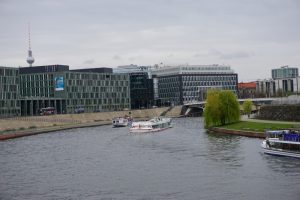








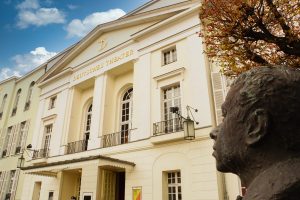


















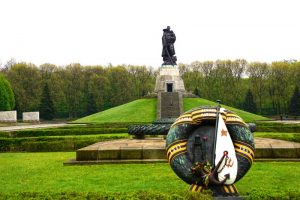














Leave a Reply